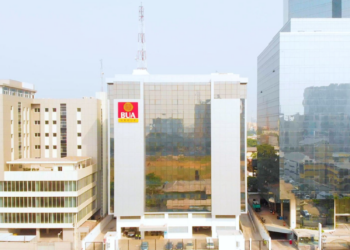Africa’s air travel sector continues to show steady growth, driven by rising demand for both business and leisure travel across the continent.
International passenger demand climbed 5.3% in September 2025, with the load factor increasing slightly to 74.7%, according to the latest figures released by the International Air Transport Association (IATA).
This reflects a broader recovery in global aviation, with intra-African routes and popular long-haul destinations seeing particularly strong activity.
Against this backdrop, one-way departing seats data from OAG.com provides a clear snapshot of the continent’s busiest airports for October 2025. These figures highlight the airports handling the highest volumes of outbound passengers, offering insight into regional and international connectivity, airline hubs, and shifting patterns of air traffic across Africa.
The ranking emphasizes the role of key gateways that not only serve domestic markets but also link Africa with Europe, the Middle East, Asia, and the Americas. From North African hubs catering to European leisure travellers to major sub-Saharan airports connecting regional business and tourism centers, these airports reflect the diverse dynamics driving air travel on the continent.
The following list presents the top 10 busiest airports in Africa by departing seats for October 2025, highlighting both passenger volumes and the infrastructure that supports their operations.

The Murtala Muhammed International Airport in Lagos ranked 10th among the busiest airports in Africa by departing seats in October 2025, recording 409,005 seats, up from 369,191 in October 2024, a 10.8% year-on-year increase. MMIA is Nigeria’s busiest airport and the main international gateway for the country, connecting Lagos with destinations across Africa, Europe, and North America.
According to data obtained by Nairametrics from the Federal Airports Authority of Nigeria (FAAN) under the International Civil Aviation Organization (ICAO) State Profile framework, international passenger traffic at MMIA rose by 6.5% to 4.3 million in 2024, compared to 4.04 million in 2023. International cargo traffic also increased by 11.31% to 150 million kilograms, up from 135 million kilograms the previous year. Aircraft movements for international flights grew by 7.69% in 2024, reaching 40,250 flights compared to 37,375 in 2023.
MMIA is the main base for Nigeria’s largest airline, Air Peace, as well as several other Nigerian carriers. The airport consists of an international terminal and a domestic terminal, located about one kilometre apart, both sharing the same runways.
The Nigerian government approved N712 billion for the airport’s upgrade, with work commencing in September 2025. The project includes rehabilitation of Terminal 1, expansion of Terminal 2, improved road access, connection buildings linking terminals, and a temporary departure hall to minimize disruption during construction.





















